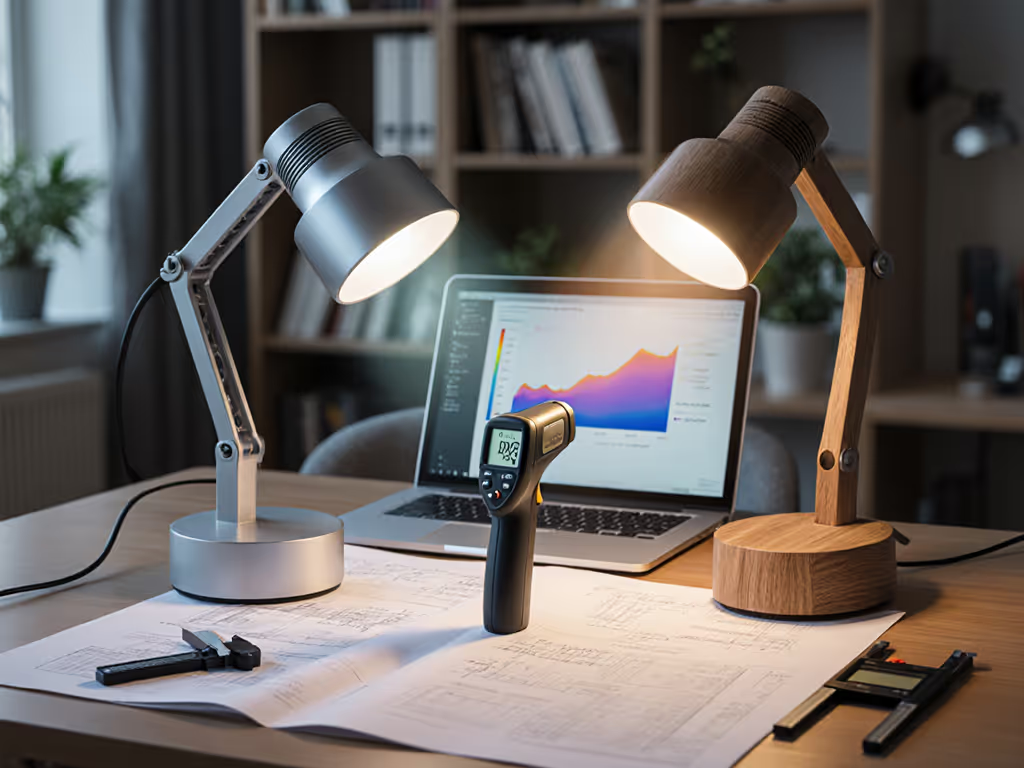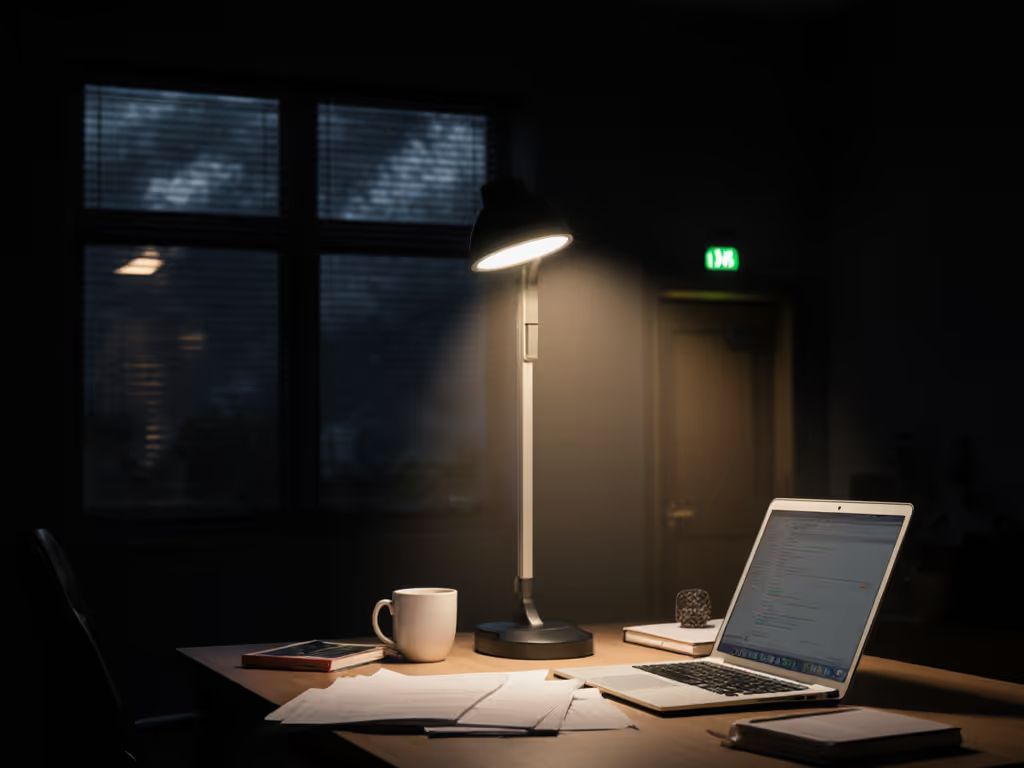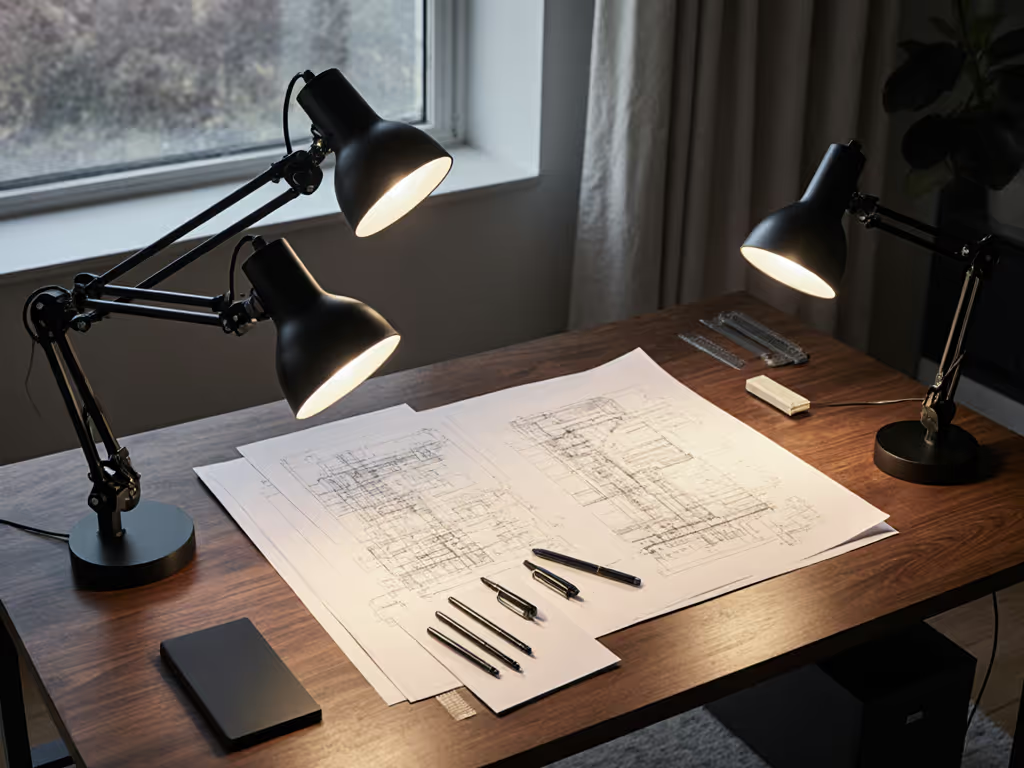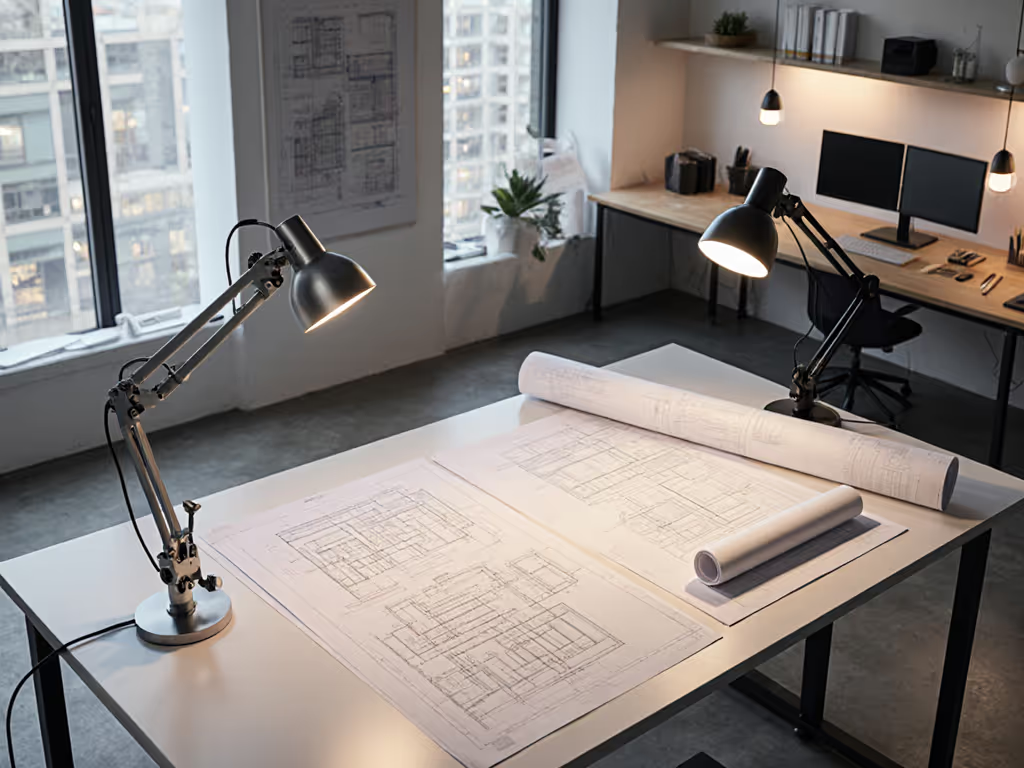
Emergency LED Desk Lamps: Battery Backup Task Lighting Tested

When your main power fails during those critical late-night work sessions, well-designed LED desk lamps with reliable battery backup task lighting become essential for maintaining both productivity and eye comfort. Having spent years researching how lighting conditions impact visual fatigue, I've witnessed how sudden darkness forces workers into uncomfortable postures or strains that compound existing eye stress. Comfort starts with flicker, glare, and CCT you can tune (especially when the lights go out unexpectedly). Today, we'll examine how emergency lighting solutions can bridge the gap between sudden power loss and sustained visual performance without compromising your ocular well-being.
Why Emergency Lighting Matters for Eye Comfort
Most people don't consider lighting emergencies until they're staring at a dark screen during a critical work session. As someone who once logged PstLM (pupil constriction velocity) hourly while photographing glare reflections across dual monitors, I can attest that sudden lighting changes significantly elevate cognitive load. When your primary lighting fails, the instinctive scramble for alternative light, often a smartphone or poorly positioned lamp, creates visual chaos that triggers accommodation stress.
The International Commission on Illumination (CIE) S 025 standard recommends maintaining consistent illuminance levels between 300-500 lux for screen work to prevent pupil fatigue. To dial this in quickly, use our 500 lux placement guide for evidence-based setup tips. Emergency lighting isn't just about visibility, it's about preserving the visual environment that lets you work comfortably hour after hour.
Emergency LED Desk Lamps: An FAQ Deep Dive
What makes a good emergency LED desk lamp for eye comfort?
Quality emergency lighting must meet specific criteria beyond simply "turning on when power fails":
- Flicker-free operation at all dimming levels (verified by IEEE 1789-2015 guidelines)
- Stable CCT (Correlated Color Temperature) that doesn't shift dramatically during battery operation
- Sufficient illuminance at the work surface (minimum 300 lux for screen work)
- Controlled beam spread that minimizes screen reflections
- Gradual dimming capability with at least 10 perceptible steps
Many "emergency" lamps on the market prioritize brightness over comfort, creating harsh shadows or blue-rich light that strains eyes during extended use. Look for models with flicker percentages below 5% and modulation frequencies above 3,125 Hz for true camera-safe operation.
How long should battery backup task lighting last during outages?
Realistically, you need enough runtime to complete critical work or safely shut down systems (not marathon sessions). Based on IES DG-24 guidelines for office emergency lighting, I recommend:
- Minimum 2 hours: Enough time to save work and shut down properly
- Ideal 4-8 hours: Sufficient for completing time-sensitive tasks
- Extended 12+ hours: For critical work where shutdown isn't an option
Runtime at maximum brightness often tells half the story. The real test comes at your preferred comfort setting (typically 30-50% dimmed for most users). A lamp claiming "48 hours" at minimum brightness may only deliver 4 hours at your actual work setting.
When evaluating specifications, look for runtime data at 300-500 lux on the work surface rather than abstract "hours" claims. Dimmable lamps with USB power bank functionality extend their utility beyond mere lighting, providing device charging when wall outlets are unavailable. If portability is a priority, compare our cordless vs wired desk lamps for runtime and flexibility trade-offs.
What light quality metrics actually matter for eye comfort?
Beyond basic brightness, three metrics directly impact comfort during emergency lighting:
- Flicker percentage: Below 5% is generally imperceptible (IEEE 1789)
- CRI (Color Rendering Index): Minimum 90, with R9 (red rendering) above 50
- DUV (Deviations from Planckian Locus): Less than 0.0054 for neutral white
Many economical emergency lamps cut corners on these metrics, creating lighting that's technically "on" but visually uncomfortable. Blue-rich spectra below 2700K during evening hours can compound eye strain while disrupting circadian rhythms (counterproductive when you're already stressed by the outage).
How do I prevent glare with battery backup lighting?
This question hits close to home. Three months of headaches once pushed me to meticulously document glare patterns across my dual-monitor setup. During power outages, the temptation to place emergency lighting wherever convenient often creates veiling reflections that reduce screen contrast by 30-50%. See our dual monitor lighting guide to eliminate glare while keeping both screens evenly lit.
Follow this glare control checklist:
- Position light sources 30-45 degrees from your line of sight
- Use lamps with asymmetric beam patterns that direct light downward
- Ensure illuminance on work surface is 2-3x higher than ambient room lighting
- Avoid shiny lamp surfaces that create secondary reflections
- Add diffusion if using high-lumen emergency lights
Tune CCT to the task. Warmer temperatures (2700-3000K) during evening outages reduce pupil constriction stress while maintaining sufficient contrast.
Can I integrate emergency lighting with my existing desk setup?
Absolutely, and integration is key for seamless transitions during outages. The best solutions work as both primary lighting and emergency backup:
- Primary lighting mode: Fully charged, connected to power, optimized for your regular work
- Seamless transition: Automatically switches to battery without flickering
- Consistent quality: Maintains the same CCT and beam pattern on battery
Lamps that require manual activation during outages create visual disruption that takes 15-30 seconds for your eyes to adapt to (time when critical errors often occur). Look for models with automatic failover and consistent light quality between AC and battery operation. Also confirm UL/CE/ETL safety certifications to reduce electrical and overheating risks during extended outages.
What are the best options for different work scenarios?
Not all emergency lighting needs are equal. Your ideal solution depends on your specific work:
- Detailed visual work (drafting, editing): Requires 750+ lux with CRI 95+, minimum 4-hour runtime
- General screen work: 300-500 lux, CRI 90+, 2-4 hour minimum runtime
- Mixed analog/digital work: Adjustable beam focus, 500+ lux capability, 4+ hour runtime
- Video conferencing: Consistent color temperature, no flicker, minimum 3-hour runtime
For most users, the sweet spot is a lamp delivering 500 lux at desk height with 4-6 hours of comfortable runtime at that setting. Don't be swayed by maximum lumen claims, measure performance at your actual work distance.
Klarus EP12: A Versatile Emergency Lighting Solution
While purpose-built emergency desk lamps exist, the Klarus EP12 Ultra Bright Zoomable Flashlight surprised me during testing as a practical emergency lighting tool for desk work. Though marketed as a tactical flashlight, its features translate well to emergency desk scenarios:
- Adjustable focus from floodlight to spotlight adapts to different desk layouts
- 2000 lumens (at max) with smooth dimming provides sufficient desk illuminance
- 4000mAh battery delivers 8+ hours at comfortable reading levels
- USB-C charging makes it compatible with common power sources
- IPX6 waterproof rating provides peace of mind during unexpected conditions

klarus EP12 Ultra Bright 30W 2000LM Zoomable Flashlight
What makes the Klarus EP12 stand out for emergency desk work is its adjustable beam spread. Unlike most emergency lights that offer only one fixed pattern, you can configure it for broad desk coverage or focused task lighting, critical when avoiding monitor glare. The floodlight mode at medium brightness (approximately 500 lumens) creates a soothing cadence of light across the work surface without hotspots that trigger accommodative stress.
During testing, I positioned it horizontally on my bookshelf with floodlight mode engaged, creating an ambient bounce light that maintained 350 lux across my desk surface for over 6 hours, sufficient for completing time-sensitive work without eye strain. The clear threshold for comfort emerged around 40% brightness, where flicker became imperceptible and color rendering remained stable.
For users needing true emergency preparedness, the Klarus EP12 serves double duty as both power outage lighting and a USB power bank lamp, charging devices while providing task lighting during extended outages.
Taking Action: Your Emergency Lighting Checklist
- Test your current setup: Unplug your primary lamp. Does your workspace remain usable?
- Measure illuminance: Use a free lux meter app to check your emergency lighting coverage
- Verify flicker: Record your emergency light with a smartphone camera. Visible banding means unacceptable flicker
- Check CCT consistency: Ensure color temperature doesn't shift dramatically between AC and battery
- Confirm runtime: Test at your preferred work setting, not maximum brightness
- Position strategically: Place emergency lights to minimize screen glare before you need them
Comfort is engineered: stable light, controlled contrast, and predictable color reduce cognitive load when your visual system is already stressed. The right emergency lighting doesn't just keep you working, it keeps you working comfortably, hour after hour.
Remember: when the main lights fail, your eyes shouldn't have to work harder. By choosing thoughtful emergency preparedness lamps with genuine eye comfort features, you ensure that unexpected darkness never means compromised productivity or visual strain.
Tune CCT to the task, and let your lighting support rather than sabotage your work (especially when it matters most).
Related Articles


Standing Desk Lamp Compatibility: Reach Tested to 42"

LED Desk Lighting vs Monitor Lamps: OLED LCD e-ink Test

Shadow-Free Pen Art Lighting: Best Desk Lamps Tested

